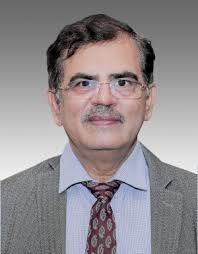
The Indian government has announced a comprehensive overhaul of the Widow Pension Scheme, introducing stringent verification processes and modernized payment systems designed to eliminate fraud while ensuring genuine beneficiaries receive their rightful support. This landmark reform represents one of the most significant changes to the country’s social welfare infrastructure in recent years.
The Need for Reform
For decades, India’s widow pension schemes have struggled with issues of fraud, delayed payments, and inefficient distribution mechanisms. Ghost beneficiaries, duplicate entries, and manual processing delays have plagued the system, preventing deserving widows from receiving timely financial assistance. The new reforms address these systemic problems head-on through technology integration and stricter verification protocols.
The timing of this overhaul is particularly significant, as India continues to digitize its governance systems. With over 4 million widows currently registered under various state pension schemes, the impact of these changes will be far-reaching and transformative.
Key Features of the New System
Mandatory Aadhaar Integration
The cornerstone of the new system is the mandatory linking of Aadhaar cards for all beneficiaries. This biometric identification system ensures each beneficiary has a unique digital identity, making it virtually impossible for fraudulent claims to slip through the cracks. The Aadhaar integration also enables seamless verification across different government databases, creating a comprehensive picture of each applicant’s eligibility.
Digital-First Approach
Gone are the days of lengthy paperwork and multiple office visits. The new system prioritizes digital applications and document submission, allowing widows to apply for pensions from the comfort of their homes. This shift is particularly beneficial for elderly beneficiaries or those living in remote areas who previously faced significant challenges in accessing government offices.
Direct Benefit Transfer Implementation
Perhaps the most impactful change is the implementation of Direct Benefit Transfer (DBT), which ensures pension amounts are credited directly to beneficiaries’ bank accounts. This eliminates intermediaries who often delayed or siphoned off funds, guaranteeing that the full pension amount reaches its intended recipient.
Comprehensive Verification Process
The new verification framework consists of multiple checkpoints designed to maintain database integrity while streamlining the application process:
| Verification Stage | Process | Purpose | Timeline |
|---|---|---|---|
| Initial Application | Aadhaar-based identity verification | Establish unique beneficiary identity | 2-3 days |
| Document Review | Digital submission and automated checks | Validate eligibility criteria | 5-7 days |
| Database Cross-Check | Integration with income and family records | Prevent duplicate benefits | 3-5 days |
| Final Approval | Manual review of flagged cases | Ensure accuracy | 7-10 days |
| Payment Setup | Bank account linking and DBT activation | Enable direct transfers | 2-3 days |
This multi-layered approach significantly reduces processing time from the previous 45-60 days to approximately 20-25 days for most applications.
Technology’s Transformative Role
The integration of cutting-edge technology has revolutionized every aspect of the pension scheme. Mobile applications now allow beneficiaries to track their application status in real-time, receive payment notifications, and access support services. Automated systems handle routine verification tasks, freeing up human resources for complex cases that require personal attention.
Cloud-based storage ensures data security while enabling seamless access for authorized personnel across different government departments. Machine learning algorithms help identify potential fraud patterns, flagging suspicious applications for manual review before they can impact the system’s integrity.
Impact on Beneficiaries
The reforms bring tangible benefits to millions of widows across the country:
1. Enhanced Financial Security
With DBT implementation, beneficiaries now receive their pensions on predetermined dates each month, eliminating the uncertainty and delays that previously characterized the system. This predictable income stream enables better financial planning and reduces the stress associated with irregular payments.
2. Reduced Bureaucratic Hurdles
The digital application process has eliminated the need for multiple office visits and reduced dependency on local officials. Beneficiaries can now complete most procedures online, saving time and transportation costs while maintaining their dignity throughout the process.
3. Improved Transparency
Real-time tracking capabilities and automated notifications keep beneficiaries informed about their application status and payment schedules. This transparency builds trust in the system and empowers widows to hold authorities accountable for timely service delivery.
Implementation Challenges and Solutions
1. Digital Divide
One of the primary concerns is ensuring that elderly or digitally illiterate beneficiaries can navigate the new system. The government has addressed this through:
- Community Support Centers: Establishing help desks in villages and urban centers
- Training Programs: Conducting workshops to teach basic digital skills
- Assisted Application Services: Providing human assistance for those unable to use digital platforms independently
2. Rural Connectivity Issues
Limited internet access in remote areas posed significant implementation challenges. Solutions include:
- Offline Capability: Mobile apps that can function with intermittent connectivity
- Partner Networks: Collaboration with banks and post offices to provide application support
- Mobile Service Units: Deployment of vehicles equipped with internet connectivity to reach remote areas
Regional Implementation Progress
The rollout of new rules varies across different states, with some leading in digital adoption while others focus on building foundational infrastructure:
| State Category | Implementation Status | Key Focus Areas | Completion Timeline |
|---|---|---|---|
| Digitally Advanced | 85% complete | System optimization and user training | 3 months |
| Moderate Infrastructure | 60% complete | Connectivity improvement and capacity building | 8 months |
| Developing Regions | 35% complete | Basic infrastructure and awareness campaigns | 15 months |
| Remote Areas | 20% complete | Mobile units and alternative delivery mechanisms | 20 months |
Future Enhancements
The government has outlined several upcoming improvements to further strengthen the system:
1. Artificial Intelligence Integration
Advanced AI systems will predict potential issues before they occur, automatically flagging irregularities and suggesting preventive measures. This proactive approach will further reduce fraud while improving service quality.
2. Expanded Digital Services
Plans include integration with healthcare services, allowing pension beneficiaries to access medical benefits through the same platform. Educational support for beneficiaries’ children and skill development programs are also being considered.
3. Regional Language Support
Complete localization of digital platforms in all regional languages will ensure that language barriers don’t prevent eligible widows from accessing their benefits.
Community Engagement Initiatives
Recognizing that technology alone cannot solve all challenges, the government has launched extensive community engagement programs:
- Beneficiary Feedback Systems: Regular surveys and feedback sessions to identify improvement areas
- Community Champions: Training local women leaders to assist others in navigating the system
- Grievance Redressal Mechanisms: Dedicated helplines and online complaint systems with guaranteed response times
- Awareness Campaigns: Mass media campaigns to educate beneficiaries about their rights and available services
Economic Impact
The reformed pension scheme is expected to have significant economic implications. More efficient fund distribution means reduced administrative costs, while fraud prevention saves millions in public resources. The predictable income stream for beneficiaries also contributes to local economic stability, as widows can now plan expenditures and contribute more effectively to their communities’ economic activities.
Early data suggests that streamlined processes have reduced administrative costs by approximately 30% while improving service delivery metrics across all measured parameters.
Success Stories and Early Results
Initial reports from pilot regions show encouraging results. Payment delays have decreased by 75%, while beneficiary satisfaction scores have improved significantly. The elimination of middlemen has ensured that 100% of allocated funds reach intended recipients, a substantial improvement from the previous system, where leakages were estimated at 15-20%.
Several states have reported complete elimination of ghost beneficiaries, with database cleaning resulting in more resources for genuine claimants. This has enabled some states to increase pension amounts for eligible beneficiaries without additional budget allocation.
Looking Ahead
The successful transformation of the Widow Pension Scheme serves as a model for other welfare programs across the country. The government plans to apply similar reform principles to elderly pensions, disability benefits, and other social security schemes.
Long-term sustainability remains a key focus, with provisions for regular system updates, continuous training programs, and adaptive policy frameworks that can evolve with changing demographic and technological landscapes.
The reformed scheme represents more than just a policy change; it embodies the government’s commitment to leveraging technology for social good while ensuring that India’s most vulnerable citizens receive the support they deserve with dignity and efficiency.
Frequently Asked Questions
Q: Is Aadhaar linking mandatory for all existing beneficiaries?
A: Yes, all beneficiaries must link their Aadhaar cards within the specified deadline to continue receiving benefits.
Q: How long does the new application process take?
A: The streamlined digital process typically takes 20-25 days compared to the previous 45-60 days.
Q: What happens if I don’t have internet access for digital applications?
A: Community support centers and assisted application services are available for those without digital access.
Q: Will pension amounts change under the new system?
A: Pension amounts remain the same, but improved efficiency may enable future increases in some states.

Mangesh garg is a passionate writer known for captivating stories that blend imagination and reality. Inspired by travel, history, and everyday moments, He crafts narratives that resonate deeply with readers.



